Manzanita
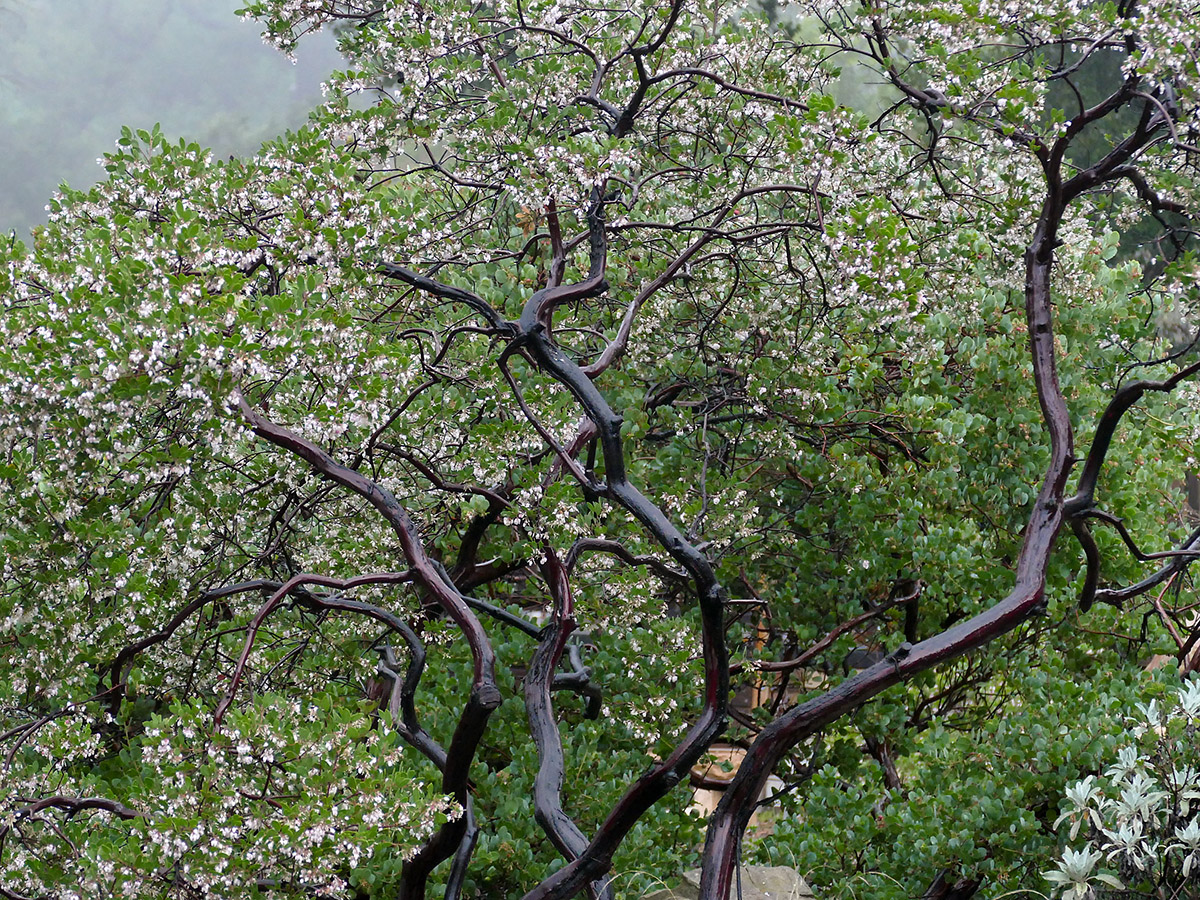
Little Apple
Jewel of the Chaparral
Santa Barbara Botanic Garden’s Manzanita Section, featuring more than 50 species and cultivars, is an example of a taxonomic garden. This type of garden is intended to display the variety of a particular group, in this case, manzanitas (the genus Arctostaphylos). Some grow tall as trees, while some stay low and creep along the ground. However, all manzanitas are recognizable by their smooth, deep-red bark and small urn-shaped flowers, which look similar to those of their close relatives, blueberries (Vaccinium sp.). Derived from Spanish, manzanita translates to “little apple” which refers to the appearance and sweet flavor of its small fruits.

Noteworthy Plants
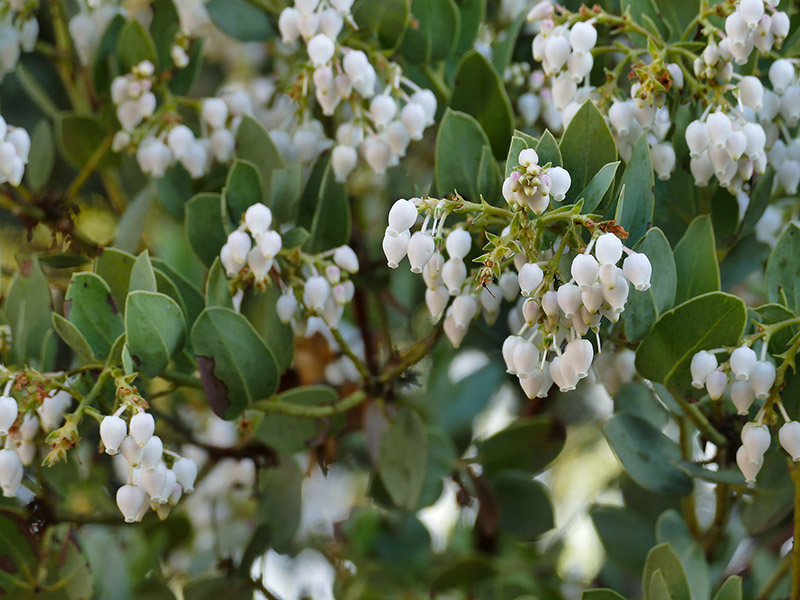
Bigberry manzanita
Arctostaphylos glauca
A common but impressive species found throughout chaparral habitats in California, big berry manzanita can grow to 20 feet (6 meters) in height.
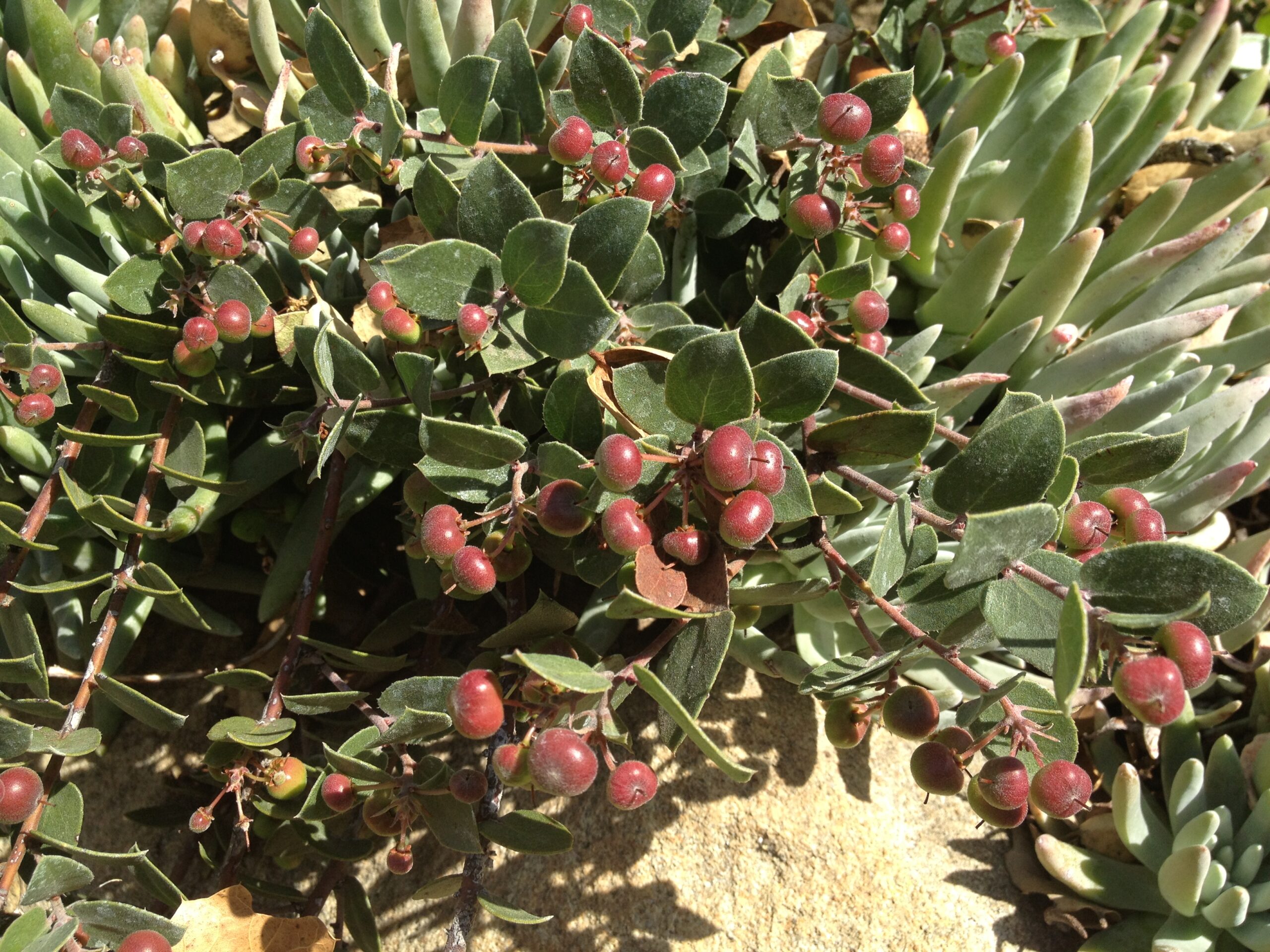
Arroyo Cascade manzanita
Arctostaphylos ‘Arroyo Cascade’
One of the Garden’s introductions, this is a manzanita with a low, creeping growth habit.
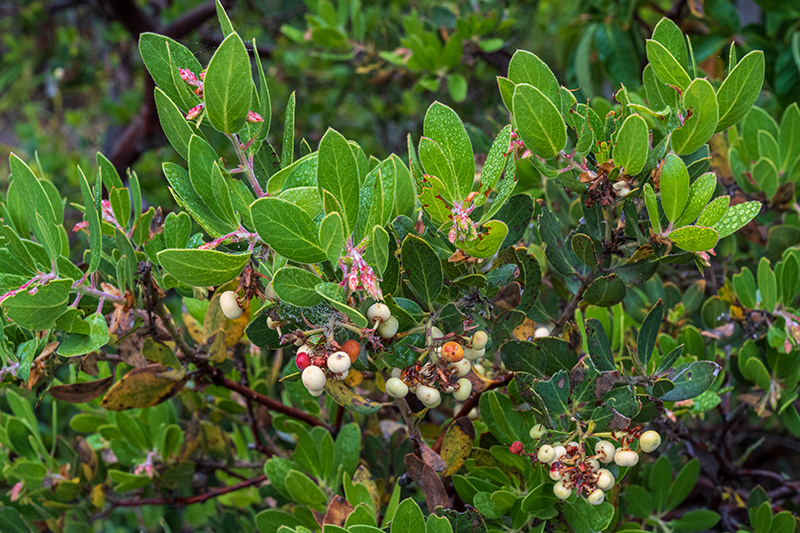
Otay manzanita
Arctostaphylos otayensis
A rare species found on Otay Mountain in San Diego County, it is threatened by development in the wild.
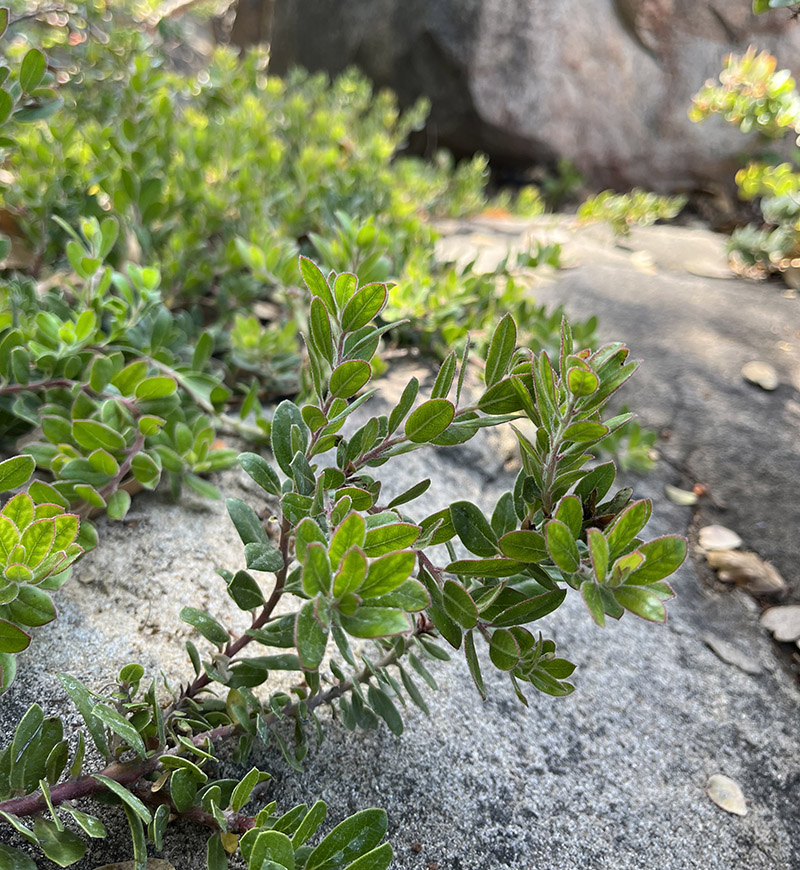
Sandmat manzanita
Arctostaphylos pumila
A low-growing manzanita found near the coast of Monterey, this is another rare species in our collection that is threatened in the wild.
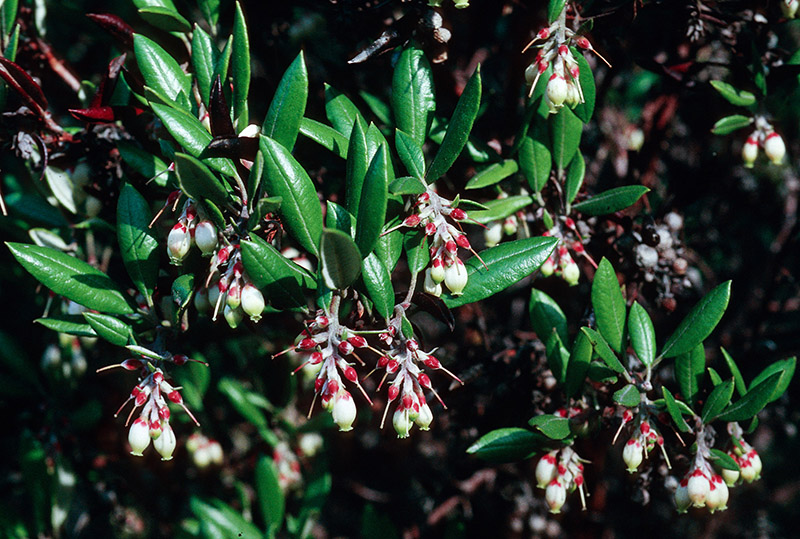
Mission manzanita
Xylococcus bicolor
A close relative of Arctostaphylos, these trees are scattered throughout chaparral habitats in San Diego County. Mission manzanitas are often pollinated by hummingbirds.
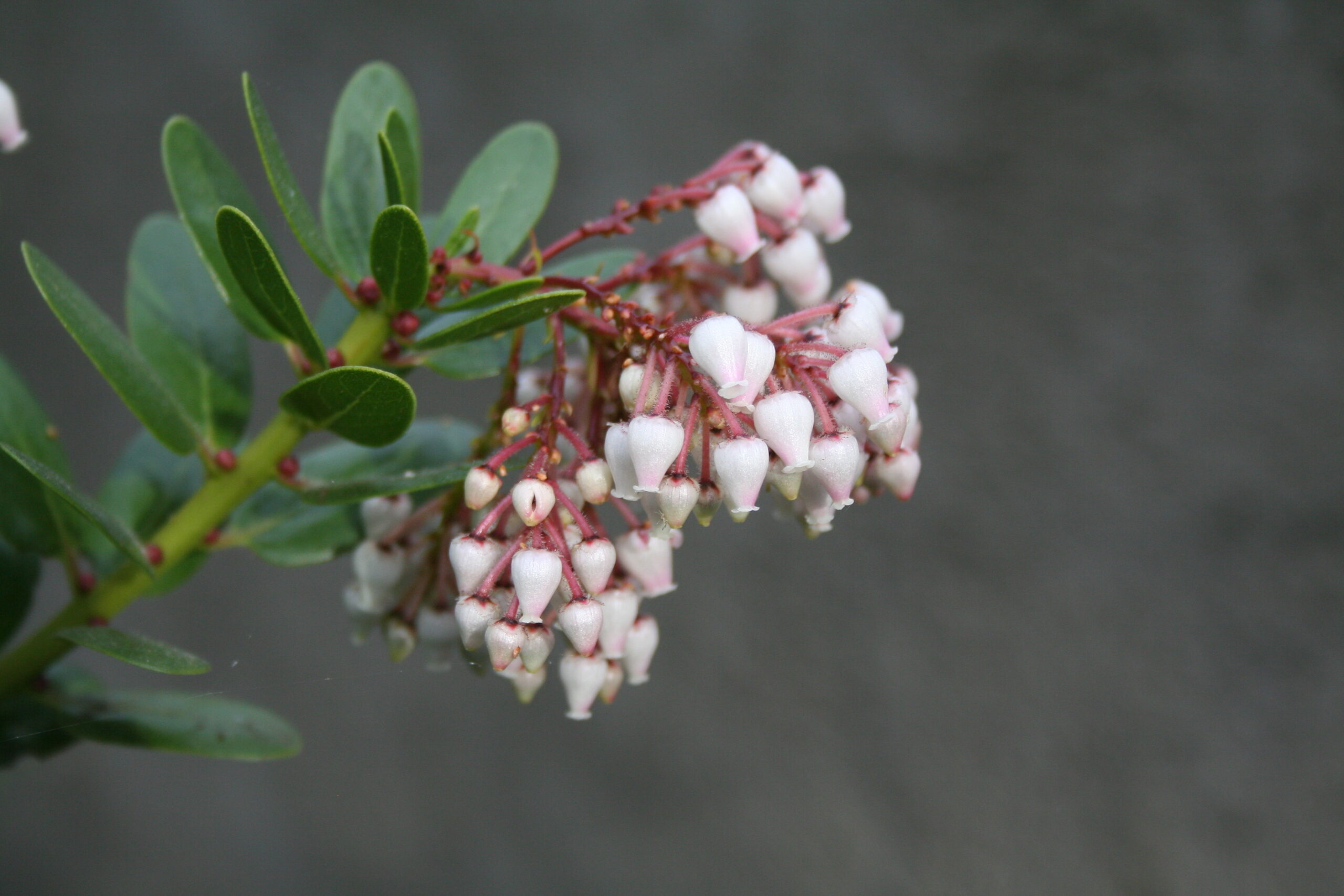
Canyon Sparkles manzanita
Arctostaphylos insularis
‘Canyon Sparkles’
Another introduction from the Garden, this cultivar forms large, dense clusters of white flowers in winter.
seasonality
Early Bloomers
Manzanitas are some of the earliest plants to flower in California, and pale pink to white blooms can be seen beginning in January. The tiny apple-shaped fruits are on display February to May, and their beautiful bark is visible year-round.
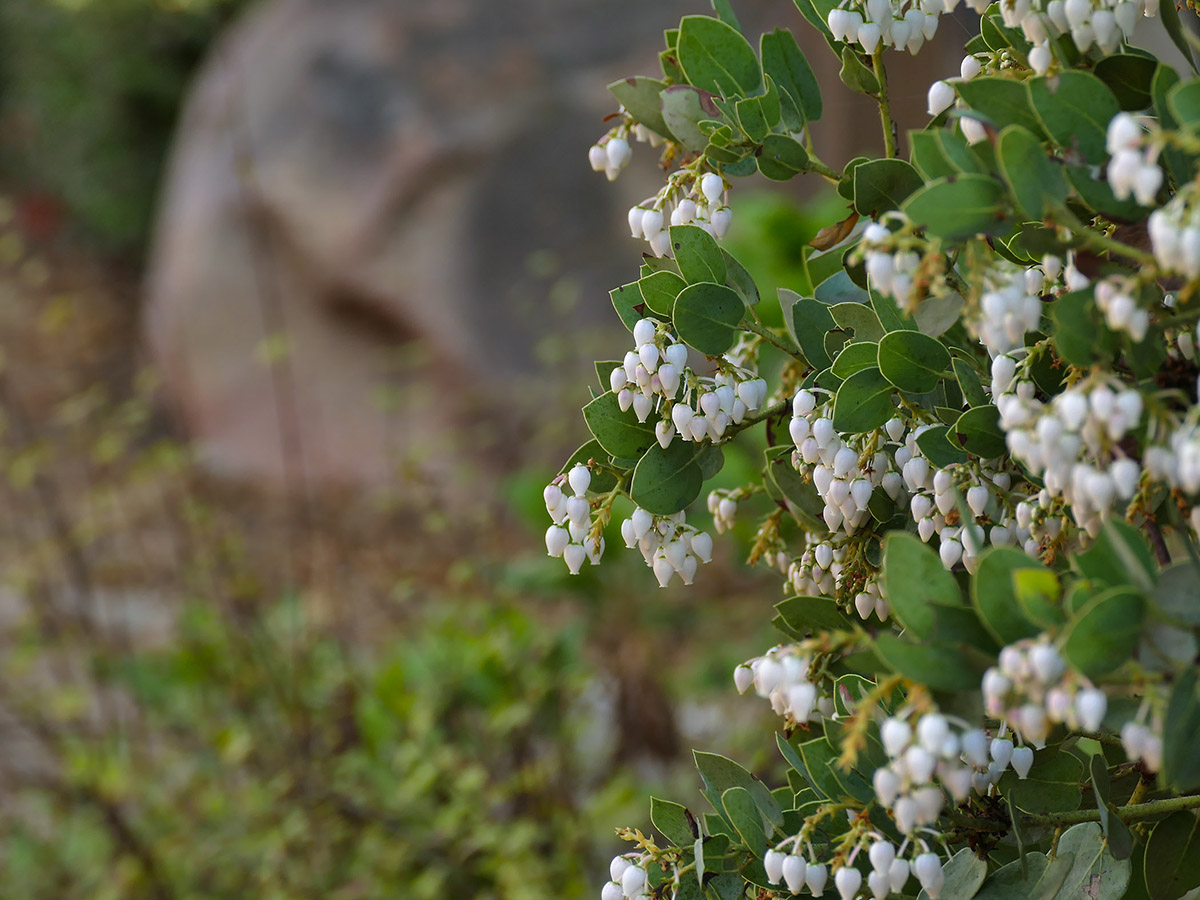
Bigberry manzanita (Arctostaphylos glauca) (Photo: Randy Wright)
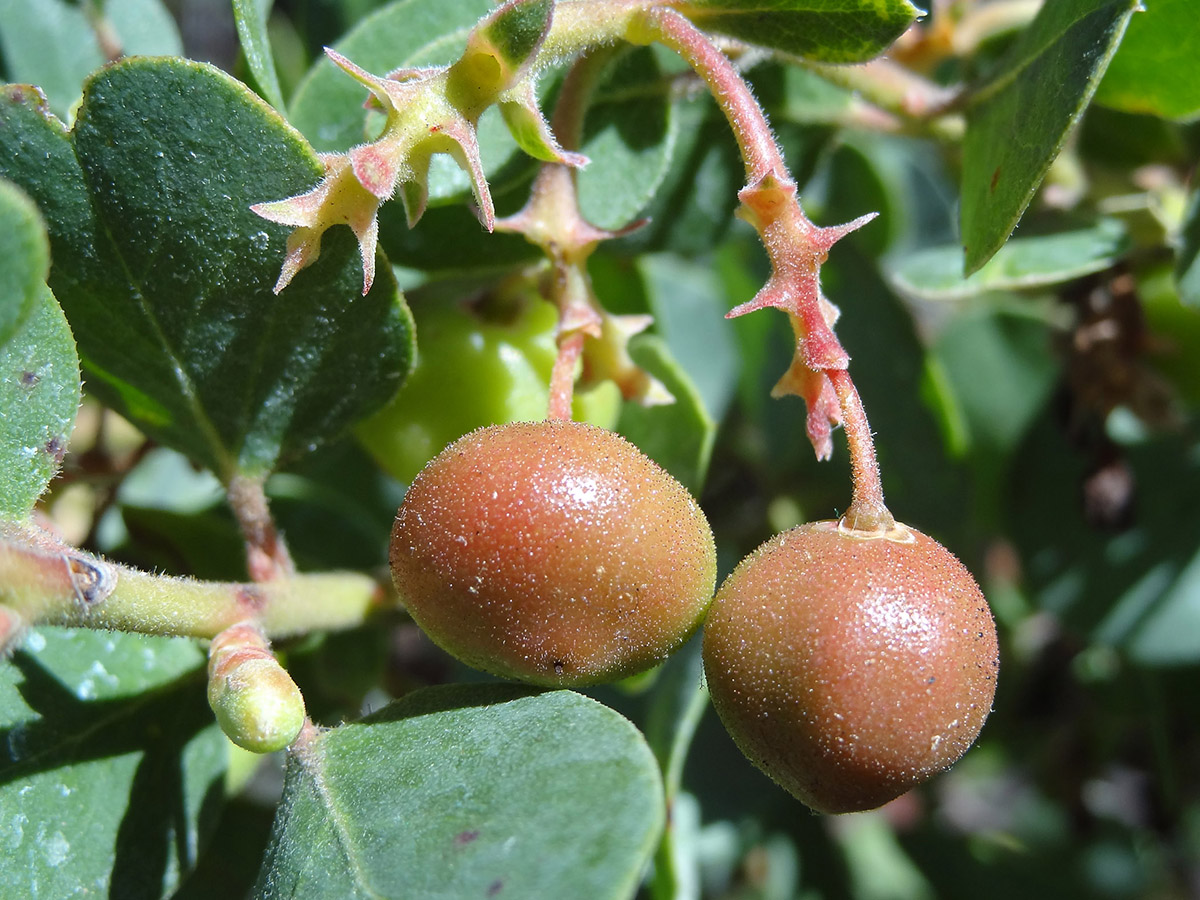
Arroyo Cascade manzanita (Arctostaphylos ‘Arroyo Cascade’) in fruit at the Garden entrance (Photo: Tricia Wardlaw)
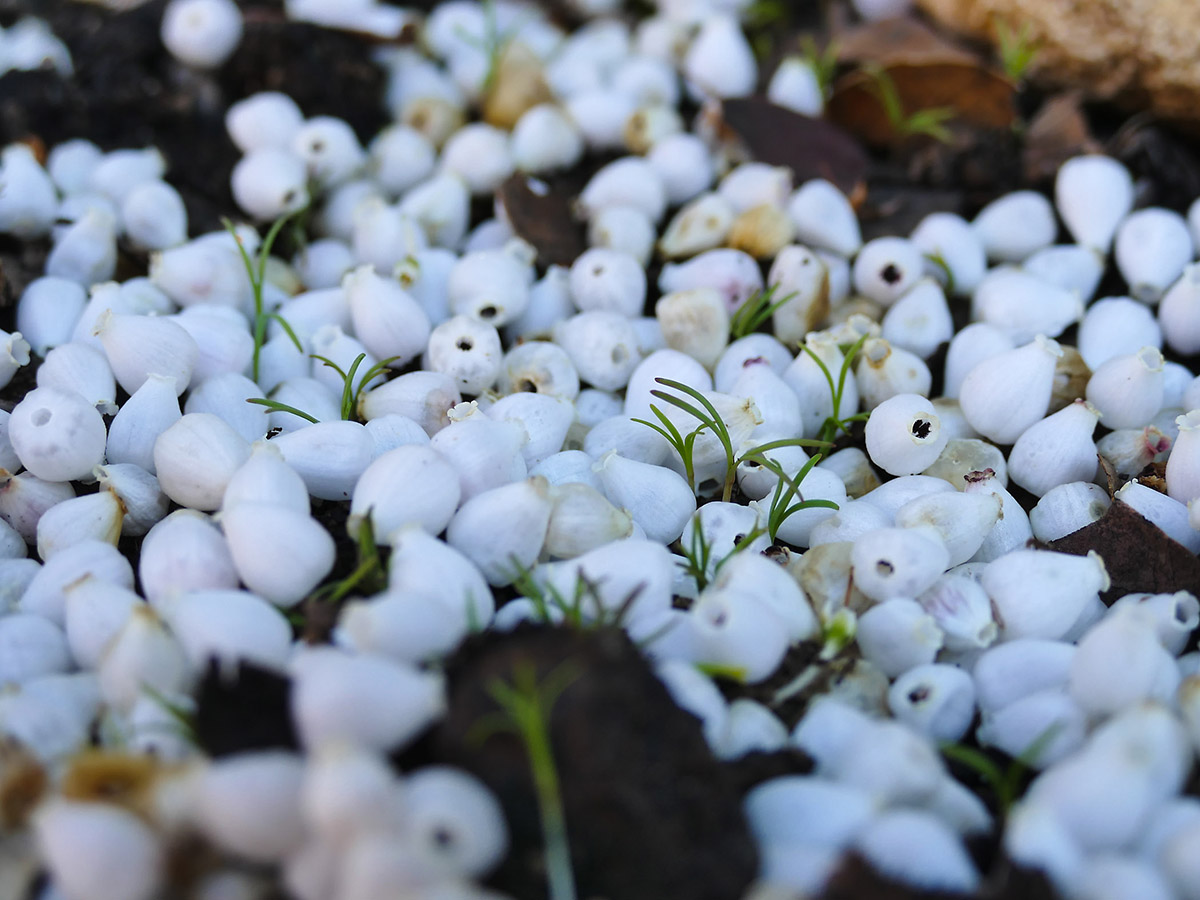
Poppy seedlings in Bigberry manzanita (Arctostaphylos glauca) snow (Photo: Randy Wright)
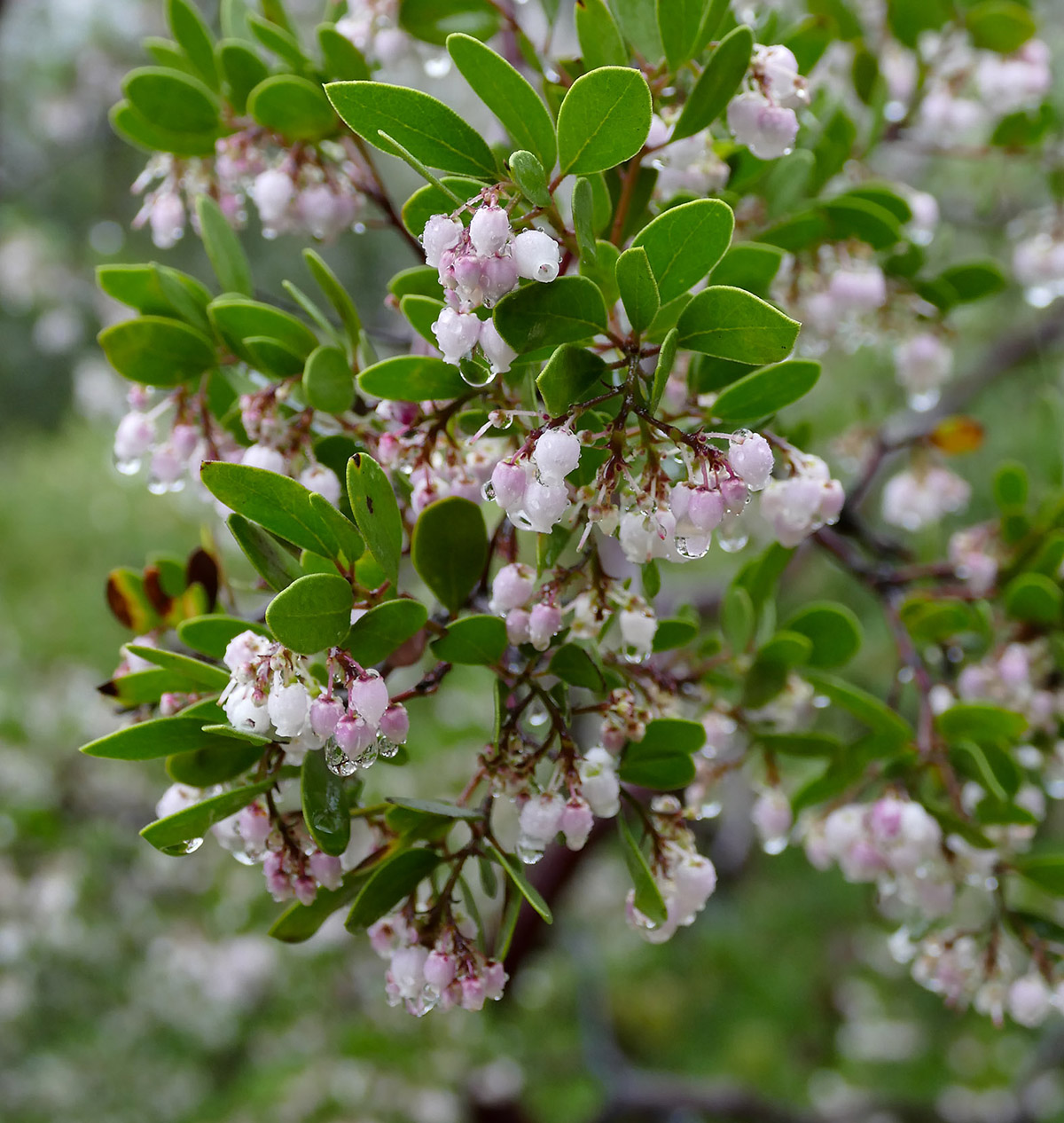
Raiche’s manzanita (Arctostaphylos stanfordiana ssp. raichei) in rain (Photo: Randy Wright)
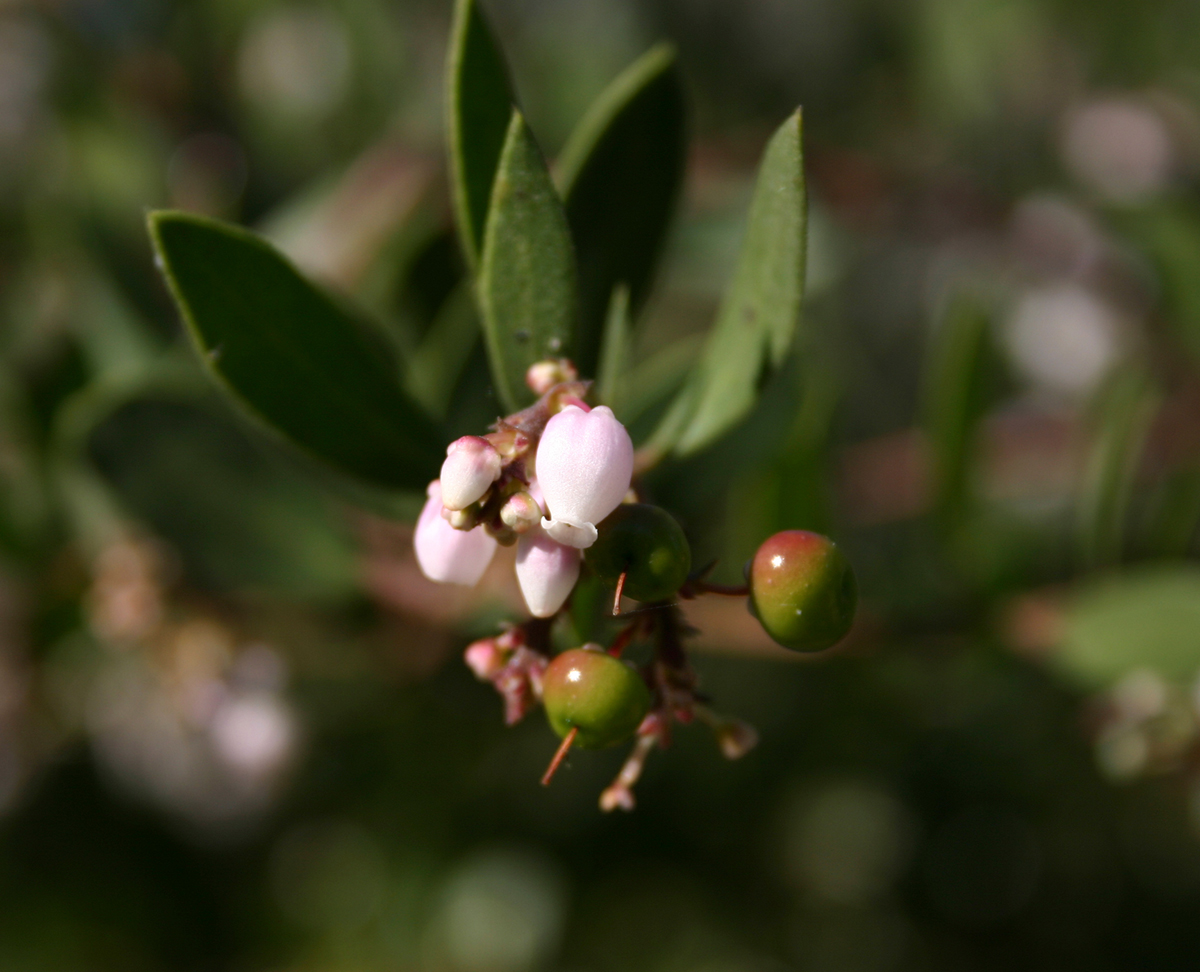
Manzanita flowers and fruits (Photo: Don Matsumoto)
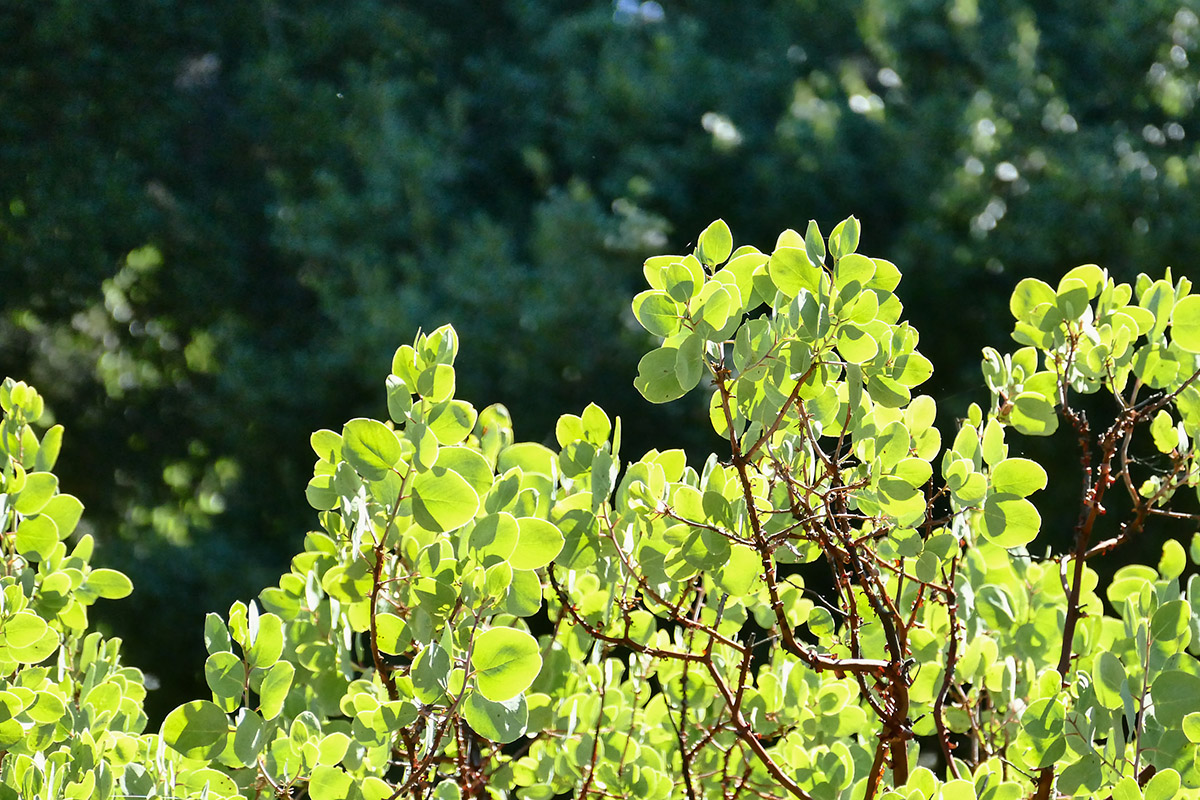
Manzanita (Arctostaphylos spp.) leaves are often held perpendicular to the ground rather than parallel to minimize the amount of direct sunlight hitting each leaf. (Photo: Randy Wright)
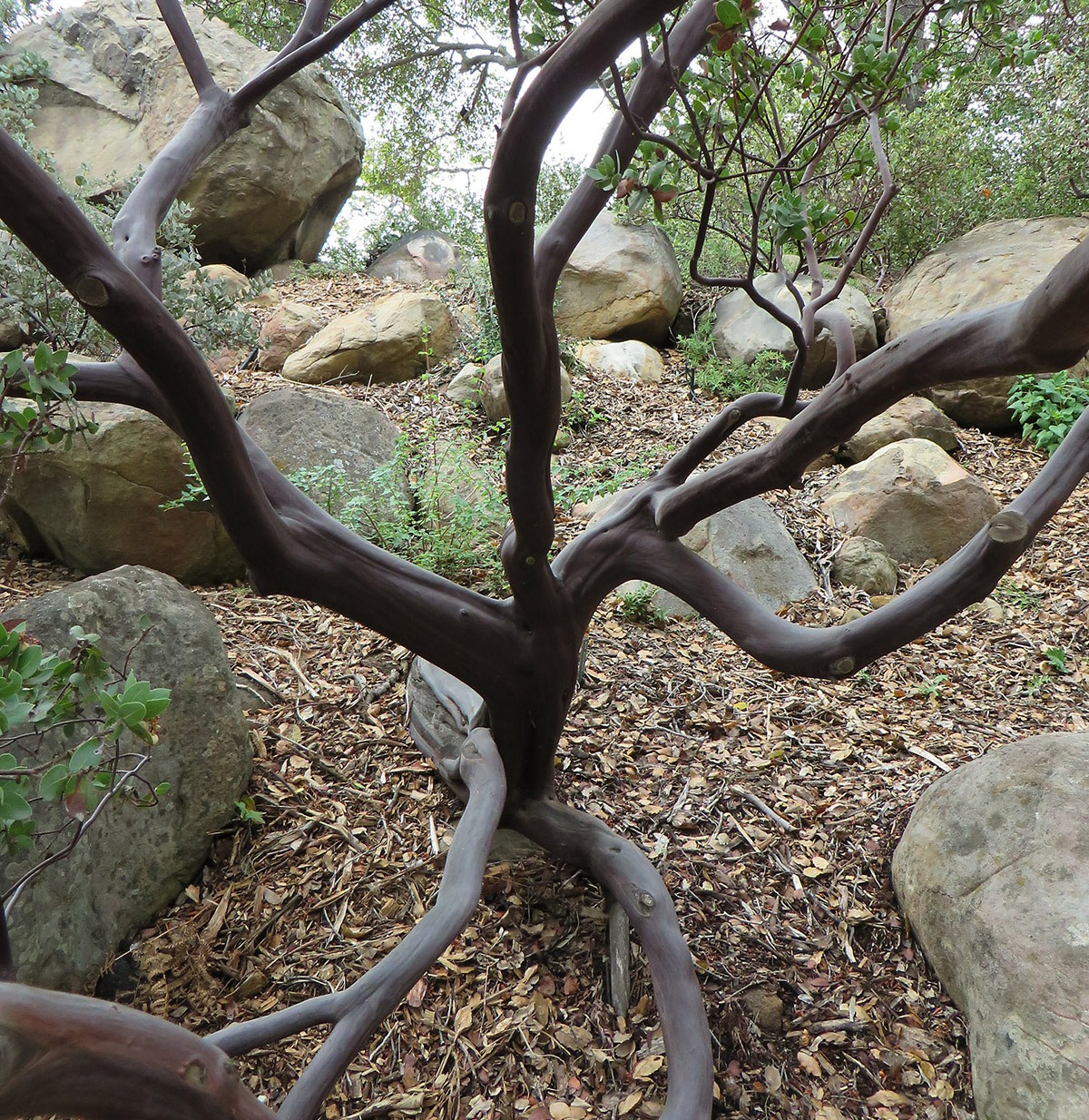
The characteristic twisting trunks of manzanitas (Arctostaphylos spp.) have made them iconic members of the chaparral and prized garden set pieces. (Photo: Elizabeth Collins)
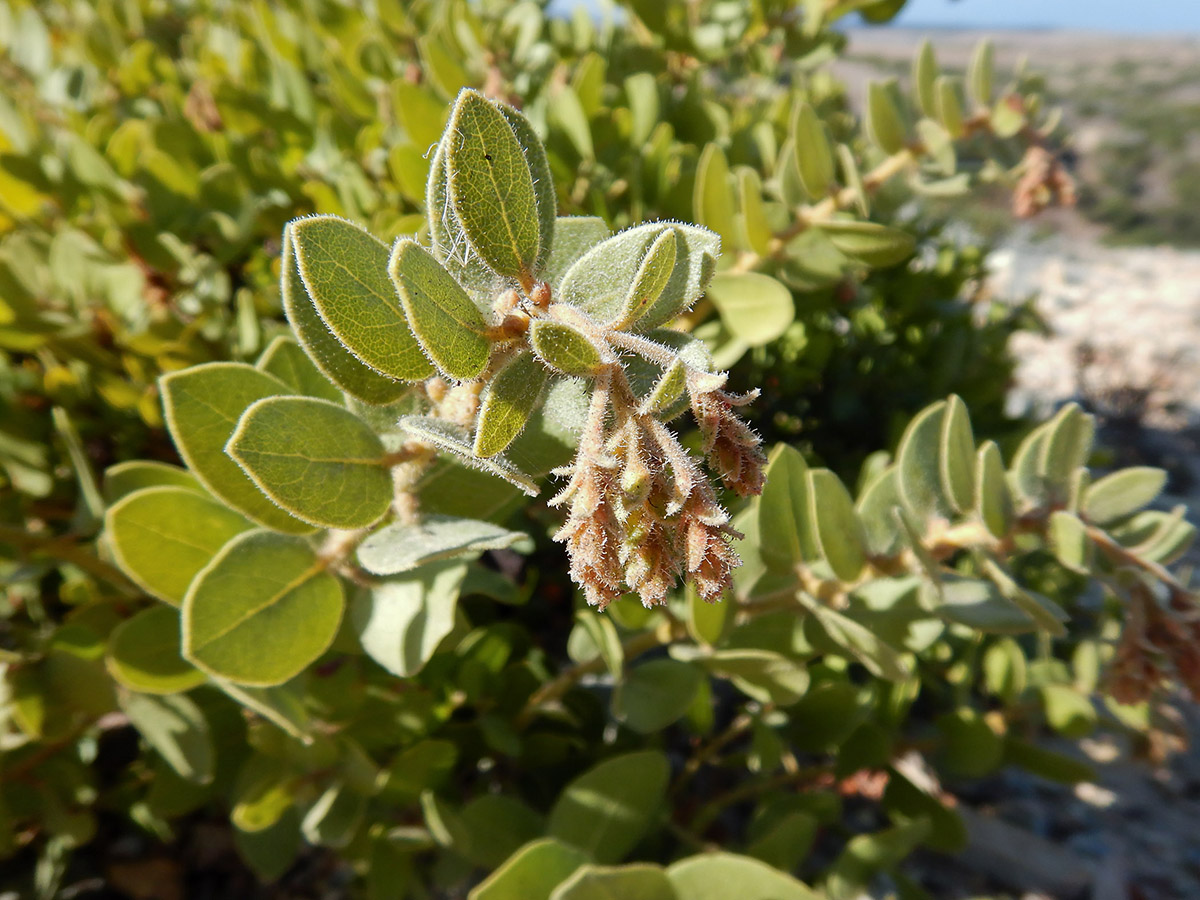
Manzanitas (Arctostaphylos spp.) think ahead! The next year’s flower buds are grown after fruit falls from the shrubs in the summer. (Photo: Sean Carson)
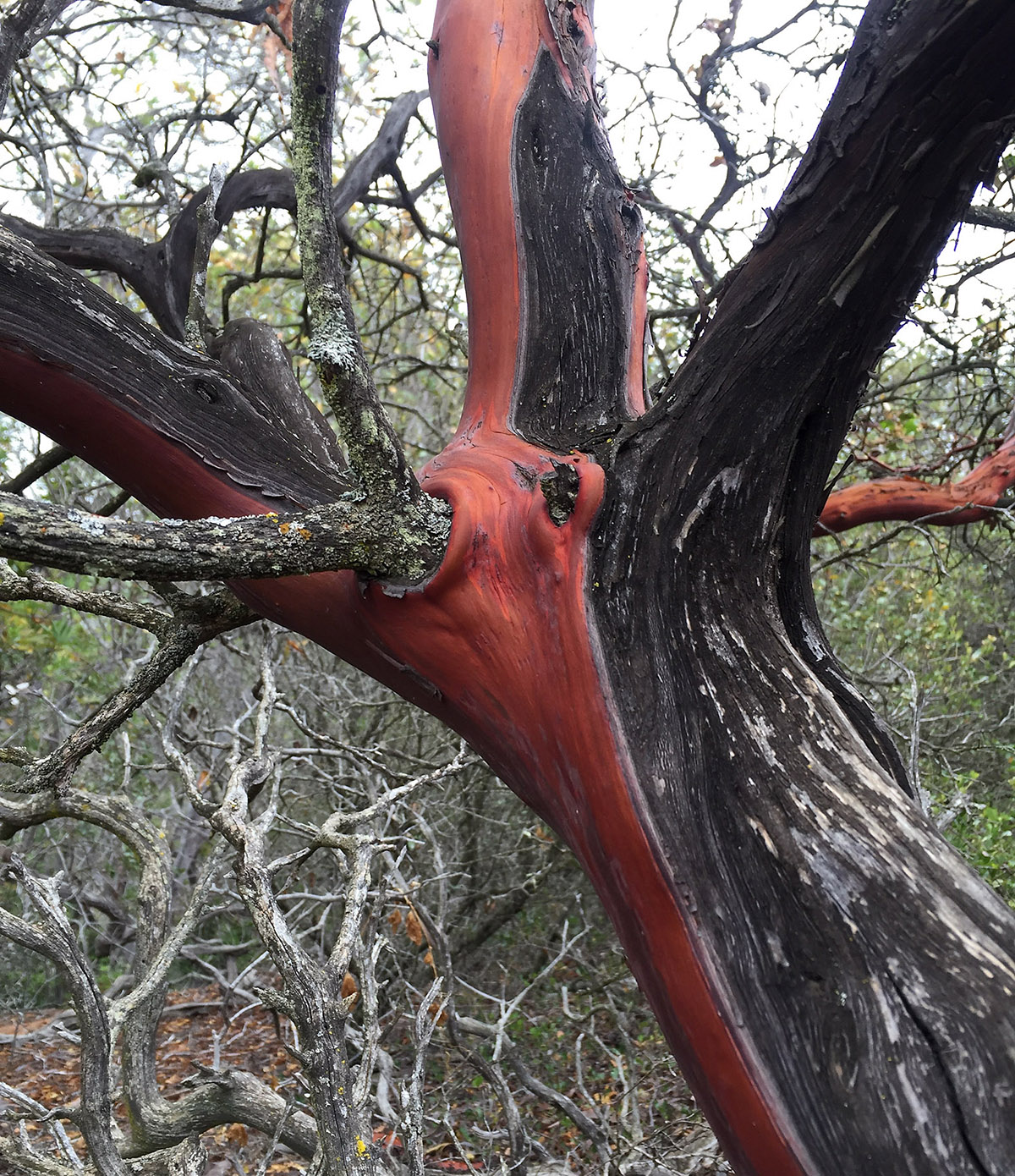
The smooth underlayer of bark seen on manzanitas (Arctostaphylos spp.) ranges from striking red to deep brown in color. (Photo: Katelin Davis)
Quintessentially Californian
Form & Function
California is the center of diversity for manzanitas. Perfectly suited to the region’s dry climate, nearly all 105 known subspecies and species of manzanitas are endemic to California. There is remarkable variation, with some species reaching 20 feet (6 meters) in height and others growing less than 1 foot (0.3 meters) tall. Manzanitas have long been prized in ornamental gardening for their striking growth form, while their berries and leaves are used in a multitude of ways by Native Americans, including for medicines and tea.
 Donate
Donate